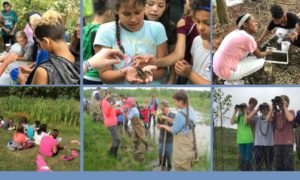 Education is not one size fits all. Nor does it stop when the traditional academic year ends. Each student has different needs, which vary depending on geographic location and time of the year. U.S. education policy needs to reflect the evolving landscape of K-12 students across the country, taking into account traditional academic year studies and after-school and summer learning opportunities.
Education is not one size fits all. Nor does it stop when the traditional academic year ends. Each student has different needs, which vary depending on geographic location and time of the year. U.S. education policy needs to reflect the evolving landscape of K-12 students across the country, taking into account traditional academic year studies and after-school and summer learning opportunities.
Allowing education departments within each state the flexibility to deliver education as they deem appropriate is at the core of the Every Student Succeeds Act (ESSA).
Signed into law in 2015, ESSA represents a step forward in how we think about education and how it is prescribed. The Act includes key provisions to help students and schools achieve success, including, but not limited to: critical protections for disadvantaged and high-need students; high academic standards that will prepare them to succeed in college and careers; statewide assessments to measure student progress; and, importantly, it taps into evidence-based strategies for continued progress — like summer learning.
To date, every state, plus the District of Columbia and Puerto Rico, has submitted its ESSA plan. Review of these plans reveal many ways for schools to combine federal and state investments to help drive student success with targeted summer activities. Most notably, they provide funding opportunities for out-of-school learning activities, such as those focusing on STEM learning, arts education, foreign language, environmental education and computer science.
Vermont and Maine are already maximizing this funding stream, directing it toward a larger strategic plan for summer learning that includes student support, enrichment and well-being. Nevada plans to use it to expand funding for schools in high poverty, low-performing communities and add many additional resources and services, including summer academies. States like Tennessee and New Mexico have connected this funding to existing statewide initiatives, such as targeting summer services for early elementary students to ensure they are reading on grade level.
Importantly, the Act allows states to better coordinate education efforts, both intra- and interstate, such as to create an education continuum for the children of migratory families, who may attend school in one state but receive summer services in another. States are starting to share key data on these students, ensuring year-round services that are seamlessly aligned.
States also plan to make strategic use of ESSA funds for bridge programs that help students and families successfully make critical transitions between grade levels. For example, Delaware’s plan describes summer home visits and “transition academies” targeting the summer between elementary and middle school while Oregon’s plan describes dropout prevention activities, such as summer activities, for students transitioning from middle to high school.
In addition to providing these critical and direct services for children, states like Tennessee, New Mexico and Maine will also use summertime for targeted professional development. Teachers and school leaders will receive intensive training on key ESSA-era issues like supporting English-language learners, Advanced Placement course instruction, career and technical education, and leadership development.
Summer learning opportunities are vital and, my organization, the National Summer Learning Association, has worked tirelessly for nearly 25 years to engage local and national leadership on the issue. Since the introduction of ESSA, we have worked to convene stakeholders from across the country, including district and state education leaders, to share their unique perspectives and maximize the implementation of ESSA to propel out-of-school time learning in support of student achievement.
So why are these efforts around summer programming so important?
Because summer learning is critical to a child’s development and education. Research shows that summers without quality learning opportunities restrict our nation’s youth — year after year — in core subjects like math and reading, and in life experiences like college and career exposure. In fact, the math and reading skills that low-income students lose each summer are cumulative and contribute significantly to the achievement gap among students from different income brackets.
Yet the demand for these programs far outweighs the supply. For every child enrolled in a summer program, another is waiting to get in. And the high average cost of summer programs ($288 per child per week) puts many options out of reach for many working families. Public investments are critical to keep these programs free to students who need them the most.
The benefits of engaging children in summer learning opportunities are undeniable. That’s according to a recent RAND Corporation/Wallace Foundation study, the largest-ever study of summer learning, which showed students with high attendance in free, five- to six-week, voluntary, district-based summer learning programs experienced educationally meaningful benefits in math and reading. This evidence, among other findings, help support national advocacy efforts to protect and expand summer programming and partnerships, and their critical federal funding streams. ESSA has the potential to do this.
In addition, the incentive to invest in summer programming can be a matter of dollars and cents. Public school funding in the 2014–15 school year totaled roughly $600 billion for 50 million students nationally (roughly $12,000 per student, per school year). If the average student loses during the summer 10 to 20 percent of what they learned during the school year, that is $60 billion to $120 billion lost every year. When the average cost of a quality summer program is $500 to $1,500 per child, why wouldn’t we invest just a little more to keep children learning year-round?
It is important to remember that student learning and development don’t stop when the bell rings, and we can’t afford to waste the myriad options that summer offers. Summer is not only a time to catch up or keep up academically, but also a chance for students to explore their interests, for teachers to refine their practice and for schools to build relationships with families. Under ESSA, we have a superb opportunity to set education funding and planning on the right track and ensure smarter, brighter futures for our children.
Rachel Gwaltney is director of policy and partnerships at the National Summer Learning Association. Before that she was chief of programs for Higher Achievement.





























